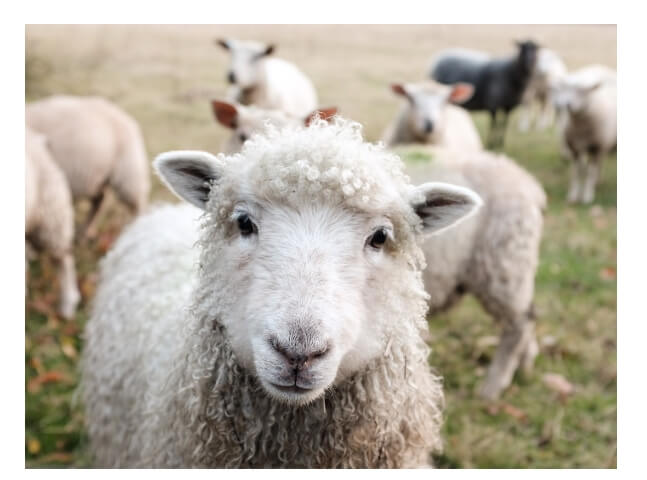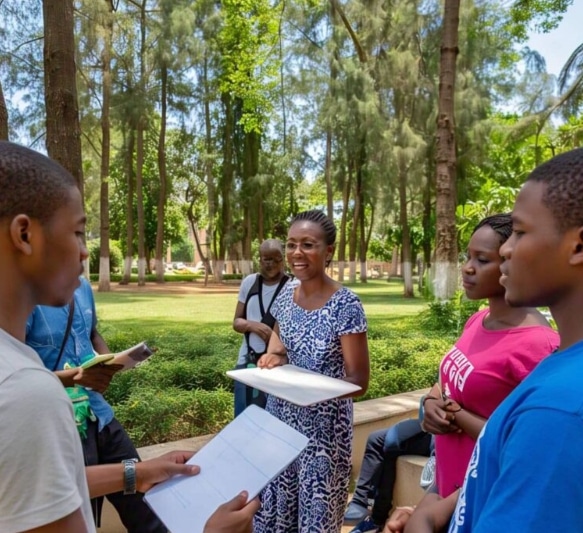Things Found in the Soil – Primary 1 Basic Science (Week 4)
1. Lesson Plan Details
Subject: Basic Science
Class: Primary 1
Term: Second Term
Week: 4
Age: 5–6 years
Topic: Soil
Sub-topic: Things Found in the Soil
Duration: 40 Minutes
2. Behavioural Objectives
By the end of the lesson, pupils should be able to:
- Explain what soil is in simple terms.
- Identify at least 10 things found in the soil.
- Mention living and non-living things found in soil.
- Describe why soil is important.
- Give examples of plants and animals that live in soil.
- Demonstrate simple observation of soil with real objects.
- Answer basic questions about soil correctly.
3. Keywords with Meanings (10)
- Soil – The top part of the ground where plants grow.
- Sand – Tiny loose particles found in soil.
- Clay – A type of soil that is sticky when wet.
- Gravel – Small stones found in the soil.
- Humus – Rotten leaves and dead plants in soil.
- Roots – The part of a plant that grows in the soil.
- Earthworm – A small animal that lives in the soil.
- Termite – A tiny insect found in the ground.
- Nutrients – Food in the soil that helps plants grow.
- Germinate – When a seed begins to grow in soil.
4. Set Induction (Attention-Grabbing Story)
The teacher sits on a small stool and acts out the scene with energy.
“Children, something funny happened yesterday! I planted a little orange seed in a cup of soil. I watered it and kept it by the window. This morning, when I checked, I saw not only the seed, but a tiny earthworm crawling inside the soil! I shouted ‘Yepa! Who brought you here?’ Then I realised… many things live in the soil. Today, we are going to explore the secret world inside the soil—just like little scientists.”
Pupils respond with excitement.
5. Entry Behaviour
Pupils have played with sand, made sand castles, pulled up grass, or seen worms after rainfall.
6. Learning Resources and Materials
- Samples of soil
- Stones, leaves, sticks
- Picture charts of soil animals
- Seeds, small cups
- Plastic spoons
- Flashcards
7. Building Background / Connection to Prior Knowledge
Teacher asks:
- “Where do plants grow?”
- “What do we step on when we play outside?”
- “Have you ever seen a worm in the ground?”
Pupils respond openly.
8. Embedded Core Skills
- Observation skills
- Communication
- Critical thinking
- Creativity
- Environmental awareness
9. Reference Books
- Lagos State Unified Scheme of Work
- Nigeria Primary Science Textbook
- Lessonshabitat.com Basic Science Resources
10. Instructional Materials
- Soil sample
- Stones
- Roots of plant
- Seeds
- Pictures of soil animals
11. Content
A. Definition and Meaning of Soil
- Soil is the upper part of the earth where plants grow.
- Soil contains many things, both living and non-living.
- Soil is made from tiny pieces of rocks, dead plants, and animals.
- Soil helps plants stand and grow.
- Soil is home to many small animals.
B. Things Found in the Soil (At Least 10 Examples)
Living Things in Soil:
- Earthworms
- Termites
- Ants
- Millipedes
- Roots of plants
Non-Living Things in Soil:
6. Stones
7. Sand
8. Water
9. Humus (dead plants)
10. Air
C. In-depth Explanation With 5 Examples Each
1. Living Things Found in Soil
a. Earthworms
- They make the soil soft.
- They help plants grow.
- They live underground.
b. Termites
- Small insects in the soil.
- They build tiny tunnels.
- They help break dead plants.
c. Ants
- Live in small holes in the soil.
- Carry food under the ground.
- Work together as a team.
d. Plant Roots
- Hold plants in place.
- Absorb water and nutrients.
- Grow deep inside soil.
e. Millipedes
- Live in dark places in the soil.
- Eat dead plants.
- Help keep the soil clean.
2. Non-living Things Found in Soil
a. Stones
- Help make soil strong.
- Come in different sizes.
- Found in the ground.
b. Sand
- Loose particles.
- Found in beaches and soil.
- Helps drain water.
c. Water
- Helps plants grow.
- Makes soil wet.
- Found deep underground.
d. Air
- Inside soil spaces.
- Helps roots breathe.
- Important for plant life.
e. Humus
- Dead leaves and plants.
- Makes soil dark.
- Gives food to plants.
12. Presentation
Teacher’s Activities
- Revises previous lesson on “Air.”
- Introduces the new topic.
- Shows pupils real soil sample.
- Lets pupils touch and observe soil.
- Brings out stones, roots, sticks, leaves.
- Asks pupils to mention things they can see.
- Holds up picture of an earthworm.
- Explains differences between living and non-living things in soil.
- Writes points on board.
- Guides pupils through discussion.
Learners’ Activities
- Listen actively.
- Touch and observe soil sample.
- Identify items found in soil.
- Ask and answer questions.
- Work in groups for activity.
- Draw simple soil items.
13. Class Activity Discussion (10 FAQs with Answers)
- Q: What is soil?
A: It is the ground where plants grow. - Q: Name one animal that lives in soil.
A: Earthworm. - Q: Is stone found in the soil?
A: Yes. - Q: Are roots in the soil?
A: Yes. - Q: What is humus?
A: Rotten leaves in soil. - Q: Do plants need soil?
A: Yes. - Q: Is sand found in soil?
A: Yes. - Q: Is air in soil?
A: Yes. - Q: Name one living thing in soil.
A: Termite. - Q: Name one non-living thing in soil.
A: Stone.
14. Evaluation Questions
A. Fill-in-the-Blank with Options
- Soil is found on the ______.
(a) sky (b) ground (c) tree) - ______ live inside the soil.
(a) fish (b) earthworms (c) birds) - A non-living thing found in soil is ______.
(a) ant (b) stone (c) root) - Roots help plants to ______.
(a) run (b) grow (c) fly) - ______ makes the soil dark.
(a) humus (b) plastic (c) iron) - Termites are ______.
(a) insects (b) birds (c) stones) - Soil contains ______.
(a) air (b) paper (c) glass) - Sand is found in ______.
(a) soil (b) books (c) shoes) - A living thing in soil is ______.
(a) water (b) ant (c) stone) - Water in soil helps plants ______.
(a) walk (b) grow (c) sleep)
B. 10 Short Answer Questions
- What is soil?
- Name one living thing found in soil.
- Name one non-living thing found in soil.
- What helps plants stand in the soil?
- What makes soil dark?
- Do ants live in soil?
- What do roots do?
- Mention one use of soil.
- Name an animal that helps soften soil.
- Is water found in soil?
15. Assessment (10 Short Answer Questions)
- Define soil.
- Mention one thing found in soil.
- Give an example of a soil animal.
- Mention one non-living thing in soil.
- What is humus?
- Why is soil important?
- Name one type of soil.
- Do roots grow inside soil?
- Mention one use of water in soil.
- What do earthworms do to the soil?
16. Conclusion
Teacher goes round the class, checks pupils’ work, explains corrections gently, praises their effort, and ends the lesson.
17. SEO Elements
Captivating Title:
Things Found in the Soil – Primary 1 Basic Science Lesson
Focus Keyphrase:
things found in the soil
SEO Title:
Things Found in the Soil | Primary 1 Basic Science
Slug:
things-found-in-the-soil-primary-1
Excerpt:
A complete Primary 1 Basic Science lesson on things found in the soil with examples, FAQs, activities, and evaluation questions.
One-word Keyword:
Soil
Meta Description:
Teach Primary 1 pupils about things found in the soil with this simple, engaging, child-friendly Basic Science lesson.











